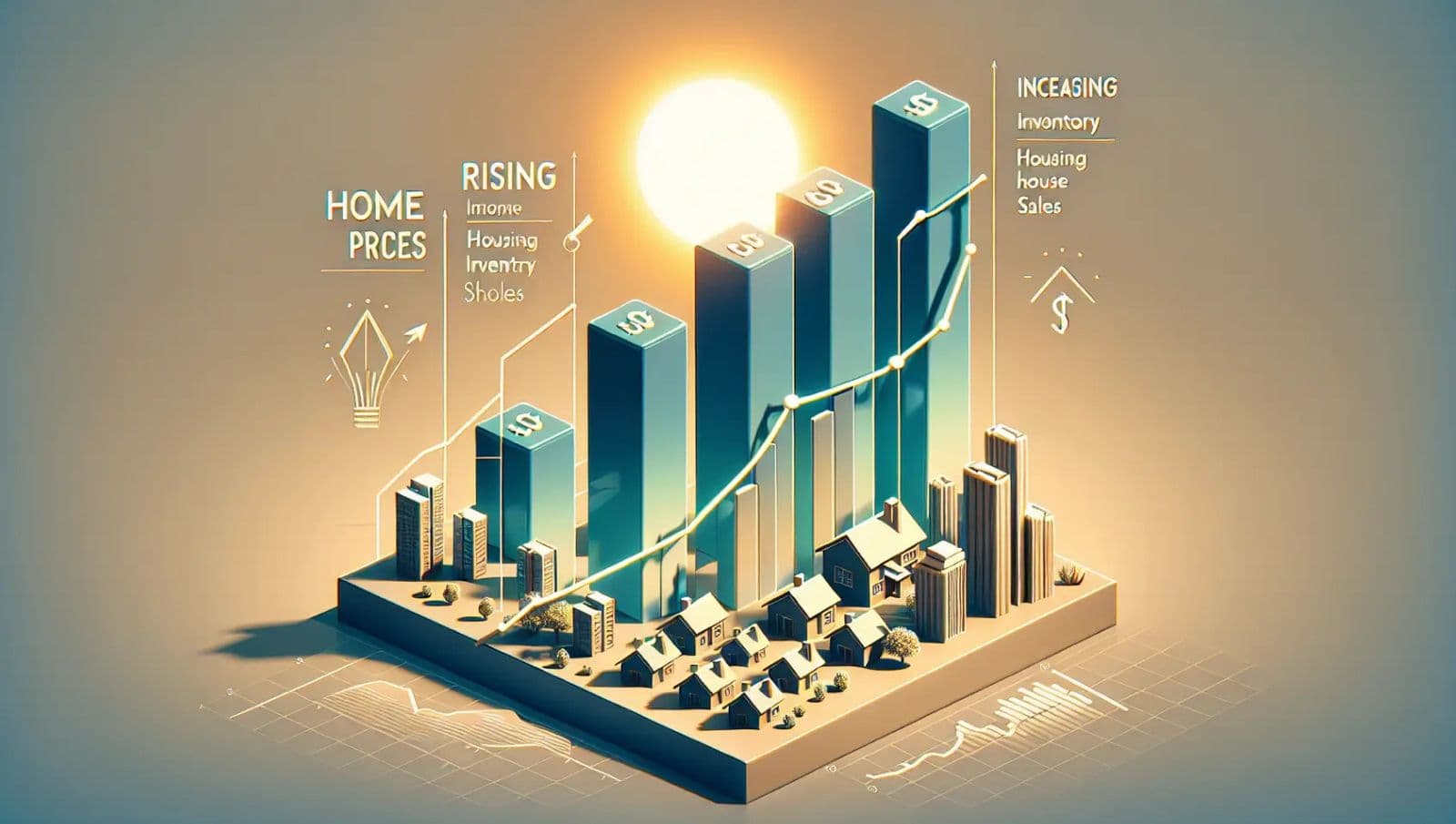Real Estate Predictions: Navigating the Indian Market Beyond 2025
Summary
India's real estate market beyond 2025 will be shaped by technology, infrastructure, and evolving preferences. Affordable housing, sustainable options, and strategic investments will drive growth in both metro and tier-2 cities.

Real Estate Predictions Beyond 2025
The Indian real estate market has always been dynamic, reflecting the country’s rapid urbanisation, growing middle class, and shifting lifestyle preferences. But as we look beyond 2025, the landscape is poised to undergo even more profound changes. The combination of technological advancements, infrastructure expansion, evolving buyer preferences, and increasing investor confidence is shaping a real estate sector that is both more resilient and more sophisticated. For buyers, developers, and investors, understanding these long-term shifts is critical to making informed decisions in a market that promises opportunities—but also requires foresight.
Changing Housing Trends in India
In recent years, Indian cities have seen a surge in demand for compact homes, affordable luxury apartments, and integrated townships. These trends are expected to accelerate beyond 2025. Urban dwellers no longer seek just a home; they seek communities with seamless amenities, green spaces, and smart infrastructure. Millennials and young professionals are driving demand for 1BHK and 2BHK apartments in prime locations, while families continue to prefer larger homes in suburbs or tier-2 cities where affordability meets lifestyle.
Simultaneously, green and sustainable housing is moving from being a niche preference to a mainstream expectation. Eco-friendly homes, energy-efficient designs, and environmentally conscious construction practices will increasingly influence buyer decisions and property valuations. This shift reflects not just environmental awareness but also a long-term economic benefit for homeowners, with reduced utility costs and better resale value.
Long-Term Real Estate Forecast
Looking beyond 2025, Indian real estate is expected to grow steadily, driven by population growth, rising disposable incomes, and urban expansion. Metro cities will continue to attract premium and luxury homebuyers, while tier-2 and tier-3 cities will see rapid growth in affordable housing. Infrastructure projects such as expressways, metro extensions, and airport developments will play a pivotal role in shaping property hotspots, turning previously peripheral areas into high-demand neighborhoods.
The rental housing sector will also gain importance, particularly in cities with large migrant populations, IT hubs, and educational institutions. Co-living spaces, offering furnished apartments and shared amenities, are expected to flourish, catering to young professionals who seek convenience, affordability, and flexibility. This trend indicates that housing preferences are evolving not only by segment but also by lifestyle considerations.
Technology’s Impact on Real Estate
Technology is no longer optional in real estate—it is central to market evolution. Proptech platforms, AI-driven pricing tools, virtual reality tours, and blockchain-based property records are transforming the way properties are marketed, bought, and sold. Buyers now expect transparency, speed, and accessibility in property transactions. Developers who integrate technology into sales, project management, and customer experience will have a competitive advantage.

Moreover, predictive analytics and big data are helping identify emerging property hotspots before prices soar, allowing investors to make informed decisions and reducing investment risk. Technology will also reshape property valuation, rental pricing, and even construction practices, making the sector more efficient and data-driven than ever before.
Infrastructure: The True Game-Changer
Infrastructure development continues to be the single most powerful driver of real estate growth. New expressways, metro lines, and airport projects are creating high-demand corridors where property values are expected to rise sharply. Cities like Pune, Hyderabad, and Ahmedabad are already witnessing housing booms near major transport projects, reflecting a pattern seen in Mumbai, Bengaluru, and Delhi over the past decade.
Smart city initiatives and planned townships are also expected to gain momentum, combining residential, commercial, and recreational spaces in cohesive communities. These developments not only enhance living standards but also boost property appreciation, making infrastructure planning an essential consideration for both buyers and investors.
NRI and Foreign Investments
Non-Resident Indians (NRIs) have emerged as significant contributors to India’s real estate growth. Metro cities like Mumbai, Bengaluru, and Gurugram remain their preferred destinations due to strong returns, lifestyle appeal, and connectivity. Beyond 2025, NRI demand is expected to rise further, especially in luxury and premium segments.
Foreign direct investment (FDI) will continue to support large-scale commercial and residential projects, introducing higher-quality standards and innovative designs. The combination of NRI participation and FDI inflows is creating a more globalized real estate market in India, expanding opportunities for developers and boosting investor confidence.
Affordable Housing: Sustained Growth
Affordable housing remains the backbone of India’s residential real estate. Government incentives, low-interest home loans, and rising incomes in tier-2 cities are driving demand. Beyond 2025, affordable housing is expected to dominate the market, addressing the needs of first-time buyers, young families, and middle-income groups.
Developers focusing on affordable homes with modern amenities and smart designs will likely capture substantial market share. The balance between affordable and premium housing will define the overall growth trajectory of Indian real estate, ensuring that supply meets the diverse demands of urban populations.
Sustainability and Green Homes
Sustainable housing is becoming increasingly mainstream. Buyers now prioritize homes with energy-efficient designs, solar panels, rainwater harvesting, and effective waste management systems. Green-certified buildings are likely to see better appreciation rates and attract premium tenants.
Beyond 2025, environmental consciousness will become a key differentiator in property marketing and investment decisions. Developers adopting sustainable practices not only align with regulatory standards but also enhance long-term value for homeowners. This shift underscores the growing intersection of lifestyle, technology, and responsibility in Indian real estate.
Predicting Property Hotspots
Identifying emerging property hotspots is crucial for both buyers and investors. Factors such as proximity to metro lines, expressways, employment hubs, and social infrastructure determine future growth areas. Cities with upcoming transport, business, and commercial developments will witness higher appreciation rates, making these zones ideal for long-term investment.
With technology, big data, and predictive analytics, investors can now spot potential hotspots before prices surge, reducing risk and maximizing returns. Early identification of high-growth areas will be key to capitalizing on India’s real estate expansion beyond 2025.
Challenges and Considerations
Despite optimistic forecasts, challenges remain. Regulatory changes, economic fluctuations, and interest rate volatility can affect housing demand and pricing. Oversupply in certain areas or delayed project completion could impact returns. Investors and buyers need to combine market insights, local knowledge, and predictive tools to navigate these uncertainties.

Additionally, balancing supply with demand is critical. Rapid urban migration and demographic shifts require developers to plan strategically, ensuring that housing supply meets the evolving preferences of buyers across income segments and locations.
Conclusion: Beyond 2025
India’s real estate market is poised for an exciting, transformative phase beyond 2025. The interplay of technology, infrastructure, sustainability, affordable housing, and investment trends is creating a more resilient and diversified market. From metro cities to emerging tier-2 towns, opportunities abound for homebuyers, investors, and developers.
Those who anticipate long-term trends, adopt technology, and invest in strategically located projects will gain the maximum advantage. In essence, the future of Indian real estate beyond 2025 is one of growth, innovation, and opportunity—a landscape where foresight and adaptability will determine success.
Summary (100 words)
India’s real estate market beyond 2025 is set for steady growth driven by urbanisation, infrastructure expansion, technology adoption, and evolving buyer preferences. Affordable housing, sustainable homes, co-living spaces, and premium properties will thrive simultaneously, reflecting diverse demand. Metro and tier-2 cities will emerge as major growth hubs, supported by expressways, airports, and metro corridors. Technology, including proptech and predictive analytics, will improve transparency and decision-making, while NRI and FDI investments enhance market depth. Despite regulatory and economic challenges, the long-term outlook is positive. Strategic investment in emerging hotspots and sustainable developments will be key to capitalizing on India’s real estate opportunities.
